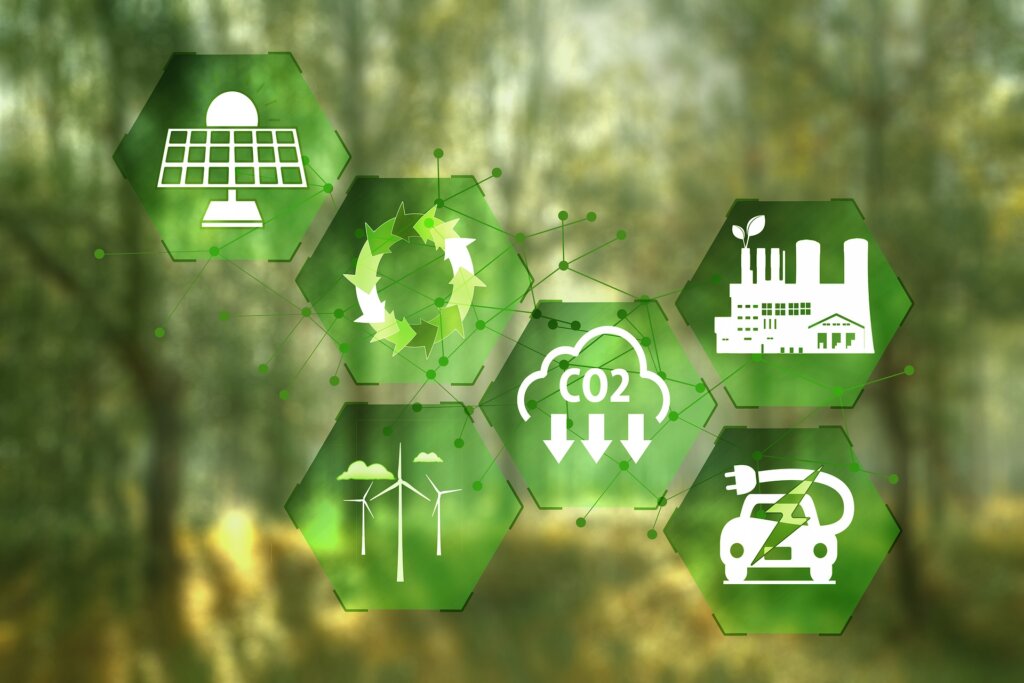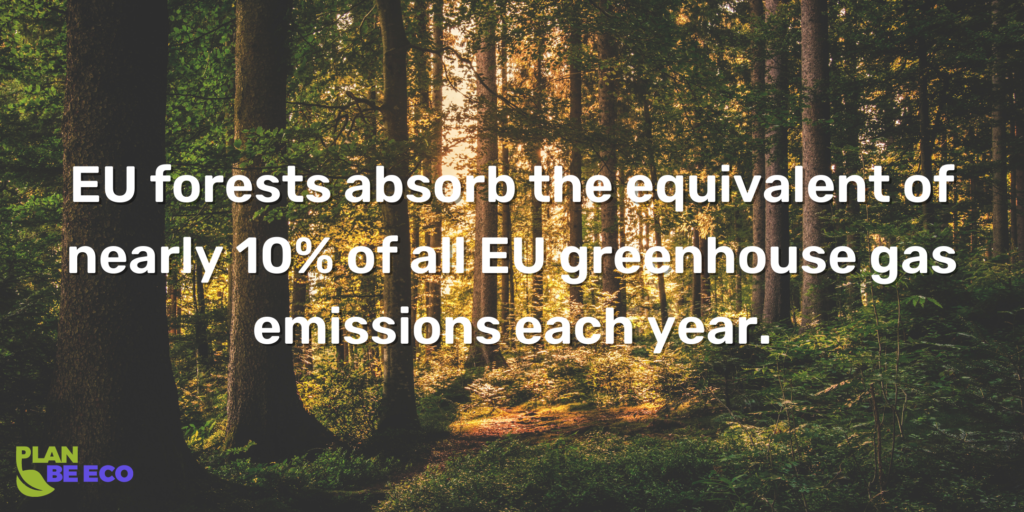Carbon neutral vs climate neutral

It’s time to look at all the terms associated with climate neutrality, understand them, and put them together so they’re never a question for you again! You’ll find out what net zero is and how it came to be in the public domain, what are the methods to reduce emissions, what are offsets, and how to offset carbon footprint without greenwashing.
Let’s go!
What is climate neutrality?
Table of Contents
Achieving climate neutrality is possible if:
all GHG emissions (company, institution, country) are reduced to a minimum
all other emissions are offset with offset credits
carbon credits, defined in the Kyoto Protocol (we write about it in sprint 2), confirm the reduction of a tonne of carbon dioxide equivalent
Interestingly, unlike air pollution, in achieving net zero emissions it does not matter where the offsetting occurs. We do not look at greenhouse gas emissions locally, and this means that for a company operating in Poland, the offset units can come from Europe, Asia, or South America.
When did we start fighting climate change?
The first time climate neutrality was discussed was at the 2015 Paris Climate Summit. At COP21 in Paris, 197 countries, including EU countries, agreed to limit the global temperature rise to well below 2 degrees Celsius compared to pre-industrial levels. To meet this goal, countries committed to achieving climate neutrality (i.e., a balance between anthropogenic emissions and their removal by greenhouse gas removals by the second half of this century. Article 6 of the Paris Agreement provided the basis for building modern emissions offset systems.
The European Union has taken action in the form of the European Green Deal, which is a strategy for achieving climate neutrality by 2050.
The Green Deal includes measures such as:
investing in environmentally friendly technologies
supporting innovation
helping to develop cleaner forms of transport
decarbonizing energy system
making buildings more energy efficient
working internationally to improve standards around the world
Most importantly, the EU Climate Law, as part of the Green Deal, consolidates the 2050 target into EU legislation.
Additionally, the Commission has established the Fit for 55 package, which indicates the need to reduce greenhouse gas emissions by 55% by 2030, allowing us to achieve climate neutrality by 2050. Read more here.

How to achieve climate neutrality?
To go straight to the definition – reduce all removable GHG emissions and then offset irreducible. Read a few examples of reduction measures. The first, non-negligible step for reduction actions is to count the total carbon footprint. Only this will be able to show the company’s vulnerability and thus make it possible to put together a tailored reduction strategy.
Which measures can be proposed?
increase the energy efficiency of buildings (term modernization, installation of heat pumps and photovoltaic systems), sealing of windows
changing the electricity tariff to a green tariff, with a significant share of renewable sources in the mix
optimization of product transport routes to the company, the policy of filling cars to 100%, avoiding “empty” runs
hybridization of the fleet (not earlier than necessary, selection of cars with low combustion, possibly hybrid)
reducing business travel
What is offsetting/compensation?
Simply put, it is the purchase of offset units – that is, activities that “pull greenhouse gases” out of the atmosphere.
According to The Carbon Offset Research and Education program, high-quality carbon offset credits must be linked to greenhouse gas reductions or removals that are:
Additionally – that is, they show reductions above the baseline
Not overestimated – i.e., calculated in a conservative manner
Permanent- meaning their effect persists over time
Not claimed by another entity
Not associated with significant social or environmental harms
This can be achieved by ensuring that emissions come from projects that have been independently audited against leading third-party certification standards, such as ISO 14064 or others.
Projects should also contribute to the UN Sustainable Development Goals Agenda.
Standardization of projects
All carbon reduction projects should be registered with one of the external organizations such as:
Gold Standard
Verified Carbon Standard
How to purchase offset units?
Directly: Carbon credits can be traded directly from project developers such as:
Indirect: Carbon credits can be purchased through brokers or exchanges such as:
Vertis
Carbonfund
EcoAct
Carbon Trade
EEX
ATTENTION: Buying offset credits does not mean that a company has a clear conscience and can emit without any reduction effort – this is greenwashing! We only offset those emissions that cannot be reduced, despite previous attempts and trying different strategies. Only then does it make sense for the climate.

Is every organization committed to offsetting emissions?
At the moment there is no obligation to reduce one’s carbon footprint, so consequently there is no obligation for such offsetting either. Nevertheless, if the carbon footprint starts to be significant in achieving competitive advantage then the search by companies to reduce it will also become more important.
However, we emphasize that the first step should always be to first reduce carbon emissions through technological or organizational measures, and only after exhausting these possibilities to reach for offset units. It is also important that they are of high quality and verified by an independent auditor.
What are the pros and cons of carbon offsetting?
Pros:
gives companies more opportunities to reduce their carbon footprint – companies can offset emissions that they cannot eliminate on their own
helps environmental projects that are unable to secure financing on their own, which improves living conditions on Earth by reducing emissions and carbon capture
regulators have a tool to enforce environmental policies – carbon offsets are mostly voluntary, but in some jurisdictions are necessary to meet local standards
are the first climate action taken by many companies, so they can become a driving force for reduction efforts
Cons:
are not sufficient – only those emissions that cannot be reduced should be offset, it is the reduction that is most important
one has to wait a long time for the effect – in the case of trees even 25-50 years
there are abuses of buying carbon credits leading to greenwashing
rich polluters feel exempt from environmental responsibility – they buy many credits instead of avoiding emissions
not all of them are verifiable, and fraudulent projects appear
What are the benefits of carbon neutrality?
Increase revenue – tell your brand is a planet-friendly brand, this can significantly attract new customers as well as employees
Reduce costs – Reducing carbon dioxide emissions is largely about optimizing your operations, and this can translate into real savings for your company
Minimize risks – if your company is not yet covered by legislation to report greenhouse gas emissions today, it doesn’t mean it won’t be in the future; or your customers won’t require you to do so. Prepare for it in advance.
Why do companies want to be carbon neutral?
Beyond altruistic motives and a desire to care about the future of the planet, companies want to be carbon-neutral because they can make money by doing so. Consumers are paying attention to whether the goods they purchase are eco, sustainable, and zero-waste – these are high-profile terms behind which there is a huge demand for such products and services. Environmentally friendly companies can receive more favorable reviews in the market, attract more investors and win better contracts. A business that does not poison the environment is a huge competitive advantage.
Climate neutral vs carbon neutrality
Climate neutral = balance between emitted greenhouse gases (CO2, CH4, N2O, etc) and absorption (offset).
Carbon-neutral – practically the same as above, except that it applies only to carbon dioxide
Net-Zero – means that a particular activity produces absolutely no greenhouse gases in the atmosphere. Importantly, it includes direct and indirect emissions, in all 3 ranges.
Climate Positive (or Carbon Negative) – this goes even further than Net-Zero, namely companies, products, or countries absorb more greenhouse gases (or just carbon dioxide) than they produce.
Actions leading to climate neutrality are a direct response to the climate catastrophe unfolding before our eyes. Since the beginning of the industrial revolution, the earth’s temperature has risen by 1.2 degrees Celsius. It’s bad, but we can still fix it – by reducing and offsetting greenhouse gas emissions. Given the magnitude of the problem that is climate change, we should take every possible action to accelerate us on the road to climate neutrality.
Scientists some time ago modeled the carbon budget we have to limit global warming to +2 degrees above pre-industrial levels. Procrastination in action today means that action in the future will have to be even more radical, decisive, and significant.
Wow, that was another huge portion of knowledge! You now have plenty of time to put it together and ask questions about our group. We will be happy to address your concerns! Climate neutrality is interesting for entrepreneurs, as is… digital footprint, which we will talk about in the next Carbon Footprint Sprint!
